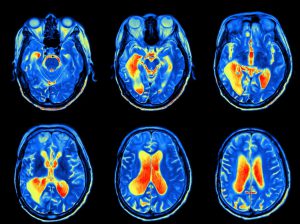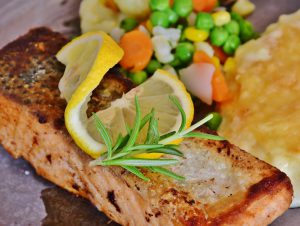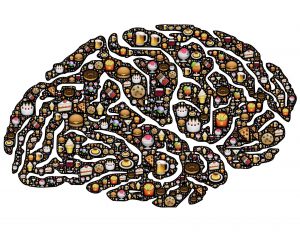What’s your go-to food vice? Do you have a sweet tooth? Is salty and crunchy that really gets you going? Or maybe every day is different, and you find yourself rummaging around for whatever snack it is that you simply must have right now, instead of reaching for all that healthy food you’ve prepped for yourself. Food cravings are real, and can be powerful; in fact, in a recent study in the journal Appetite, 97% of women and 68% of men reported experiencing food cravings. And, unfortunately, these cravings are often for the least nutritious foods. So what is it that’s causing you to need those chips or to have cookies on the brain? Is it your body telling your something, or is your brain playing tricks on you?
Let’s Get Physical
Cravings may seem simple: you really, really want some chocolate because, well, you just do. But scientists and nutritionists acknowledge that food cravings are actually pretty complicated. No one really knows exactly why we crave what we do, and how our brains and bodies are interacting with each other when we become focused on wanting one particular food. Some nutritionists believe that, while there is a psychological element to food cravings, the exact food you’re laser-focused on might be telling you that your body is missing something. For example, if you’re craving:
- Salty food, some nutritionists will tell you to put down the chips and pick up the water. Seems counterintuitive, but being dehydrated could be behind your desire for sodium. Your hydration and electrolyte levels can get out of whack for a lot of reasons: illness, exercise, alcohol consumption, or even chronic stress. “Our body naturally craves fluids and salty foods to help replenish the electrolyte balance that can easily get unbalanced,” says registered dietitian Tracy Lockwood Beckerman. Her answer to salty cravings? Foods that are naturally high in salt like crunchy carrots and celery, or adding some quality Himalayan salt to your veggies. Plus, keep your water bottle at hand and sip all day long!
- Sweet food, you could have another type of imbalance. “We crave sugar in response to imbalanced blood sugar levels,” says registered dietician Amy Shapiro. “As they go up cravings subside, but as they come down our body craves more.” Blood sugar imbalances can happen for a lot of reasons, including not eating enough, and eating too many starchy foods and not enough protein and healthy fats. You could also be tired or stressed if your sweet tooth is acting up: your body might be trying to get you to reach for a surefire energy burst. Nutritionists who believe that there’s a physical cause behind sugar cravings will tell you to eat satisfying, balanced meals, grab some naturally sweet foods like squash, dates, coconut, and grapes. You should also get enough rest and try incorporating calming some exercise, like yoga, into your daily routine.

- Caffeine, the reason is pretty clear. You’re exhausted. That, or you’ve formed a habit and your body has come to expect a caffeinated drink at a certain point everyday. But some nutritionists will also tell you to look to your iron levels if you can’t seem to shake the caffeine cravings – symptoms of low iron levels include fatigue and weakness. To break free from your caffeinated prison, first try reaching for a different morning beverage, and then try eating iron-rich foods like beans, shellfish, spinach, quinoa, tofu, and broccoli.
- Chocolate, then you’re just normal, right? Just kidding! It is true, though, that chocolate cravings are very common, especially among women. While many scientists believe that this strong desire is a conditioned response (no real link has ever been found between PMS and chocolate cravings, for example), some people believe there are physical reasons behind it. “Chocolate is high in both sugar and fat and can be craved for a multitude of reasons including a sugar fix, hunger, caffeine craving, habit, stress, or if your body is in need of magnesium,” says Beckerman. If you feel like there’s a physical reason behind your chocolate craving, one option is to reach for a healthier food that’s high in fat and sugar like an apple with almond butter, as well as to eat balanced meals and snacks to help you maintain energy levels and keep your cravings from taking control. You can also try eating magnesium-rich foods like avocado, beans, almonds, tofu, fatty fish, and even a bit of dark chocolate. Remember, it’s ok to indulge your cravings, especially if you’re not doing it every day, and if you’re eating dark chocolate, which is lower in sugar.
All in Your Head?
While the idea that strong cravings for a certain food are linked to certain deficiencies has been around for a long time, many scientists now think that the brain may actually be more to blame than the body. After all, not many Americans are eating diets without enough sodium, or are dangerously low on magnesium. In fact, more studies are now showing that cravings are linked to our feelings about food.

To take a closer look at this idea, let’s take a quick look at some science. In a recent study in the journal Psychology and Behavior, healthy young men and women were put on a diet that met their nutritional needs but was, well, boring, to find out what cravings they would report. Unsurprisingly, the subjects experienced stronger and more frequent cravings than normal, usually for foods high in fat, salt, sugar, and calories. Their desire for certain foods seemed to be linked more to habit and restriction.
In fact, there is more evidence that strong cravings are all in our heads, so to speak. In a study published in the journal NeuroImage, researchers used MRIs to investigate which areas of the brain are involved in food cravings. Participants were given a nutritional drink (so that they weren’t hungry during the test), and then asked to think about the taste, smell and texture of a favorite food to prompt a craving. Once they were all fired about their favorite treat, they were given an MRI, which showed that the same part of the brain involved in drug addiction lit up. These are: the hippocampus, which is important for memory and helps reinforce reward-seeking behavior; the caudate, which helps us to form habits, including food-related ones; and the insula, which contributes to the emotional connection between food and cravings.
Scientists, nutritionists, and dieticians believe that hormones and memory also play a part in our cravings. Eating enjoyable foods stimulates our hormone receptors, and we need more and more of it to continue feeling good – again, similar to how our brains handle addiction to other things. In addition, memories and emotion are strongly tied to our reactions to food. Just think about how you feel when you smell freshly baked bread, see an advertisement filled with Christmas cookies or holiday chocolates, or even step inside a movie theater and smell the familiar smell of buttery popcorn.
Ways to Keep Cravings in Check

So how do we beat cravings? The answer to that can be as mysterious as why we’re craving something in the first place. But there are lots of strategies you can try, from ways to feed our bodies to ways to trick our brains.
- Satisfy yourself – As we noted above, eating a satisfying, nutritious, and varied diet full of protein and fiber can help to ward off cravings – and is always a good idea in general! In addition, you might want to add some of your most-often craved foods into your diet, in moderate amounts. You don’t want to surrender more often, or your brain might step in and form an unhealthy habit, but if you are always suppressing your cravings, you could be doomed to failure.
According to Professor Susan Roberts of Tufts University, “Pick the [unhealthy foods] that you love and have [just] them, not a wide variety. And then have them occasionally, not all the time. The best thing is to have a similar flavor that addresses the cravings, but in a food that is more satisfying. Our hypothesis is that cravings are maintained by the neurological reward that you get from ingesting a lot of calories. So when you have a lower-calorie, more slowly digested food, the metabolic stimulus that maintains the craving is reduced.” For example, try some high-fiber cereal mixed with melted chocolate, or a low-sugar granola or trail mix that has pieces of chocolate in it.
- Picture it – Have you ever noticed that you lose focus when an intense craving hits? Studies have shown that your cravings can interrupt your cognitive function, so try to beat your brain at its own game: visualize a vivid image and you’ll use the same part of the brain that’s involved in cravings, and you might just be able to keep it in check.
- Stop and smell the roses – Remember the smell of popcorn at the movie theater? Smells are strongly associated with memory, and when we smell something we associate with something good, we want it again. If this is what is triggering your cravings, you can try smelling something else that is pleasant, but not food-related – studies have shown that this reduces cravings.
- Get moving – Other studies have shown that getting some physical exercise when a craving hits helps to lessen your desire for that food – plus, you’ll be doing double duty for your health!

- Relax – It’s easier said than done, but reducing stress can go a long way towards reducing unhealthy cravings. Studies have found that women who are under stress are more prone to cravings for sweet foods than those do not report feeling stressed. Try adding a mindfulness or meditation practice into your day, starting a journal, doing yoga (or any other form of exercise!), or even just reaching out and connecting more with loved ones.
- Start new habits – Sometimes we get used to picking up that order of fries or a sweet, iced drink on the way home, or when we settle onto the couch, we just automatically pick up that bag of chips. Habits are easily formed and not so easily broken, but it can be done. Try taking a different route home or going for a walk through the park instead if you’re out; if you’re at home when cravings hit, make it a habit to text a certain friend when you sit down, or change up the order of your evening – try jumping in the shower, for example.
Food cravings are more complicated than they seem. All the science seems to be telling us that our brains and bodies are working together when these cravings hit – and it can feel like they’re both working against us! But now that you know what might be going on behind your undeniable urge to eat chocolate or french fries, you can use the strategies provided to try to stay on a healthier course. Of course, don’t forget to have that piece of chocolate cake now and again – and really, really enjoy it!

